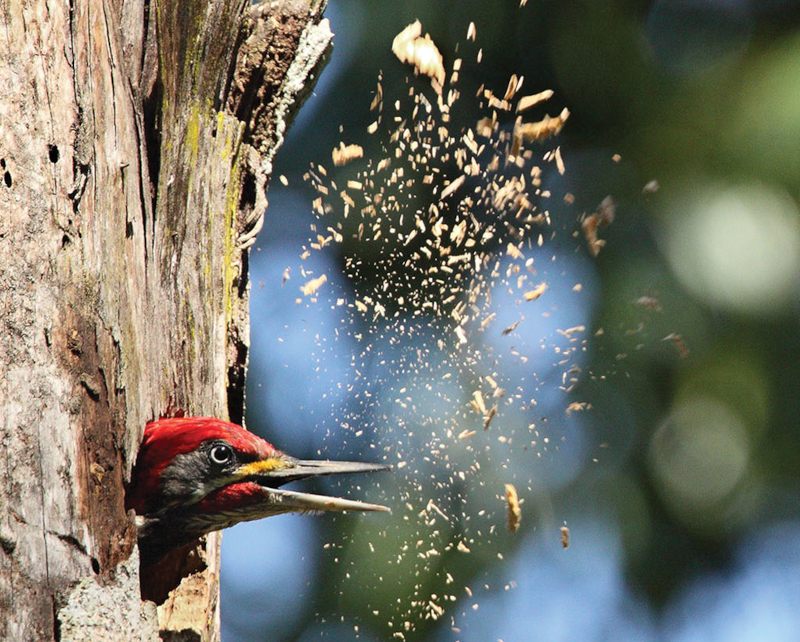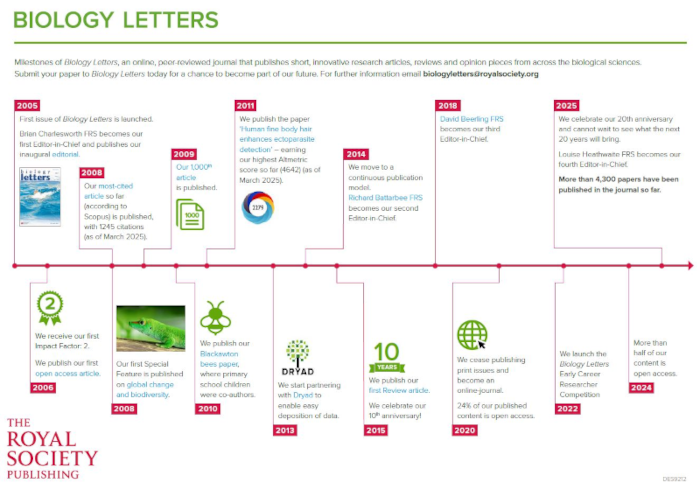We’re coming out of our tree – it’s Biology Letters’ 20th anniversary!

On 22 March 2005, Biology Letters was launched as the seventh journal in the Royal Society’s portfolio in response to the need from the community for short and rapid communications. Originally created as a supplement to sister journal Proceedings of the Royal Society B, such was the speed of our developing a strong reputation across biology that the decision was taken to separate the two publications, ensuring that Biology Letters could fully recognise its potential as a leading publication in its own right.
Explore the first issue of Biology Letters and our inaugural editorial article by our first Editor-in-Chief, Brian Charlesworth FRS.
While our commitment to publishing short, high-quality articles in the biological sciences remains, much has changed in 20 years. As well as publishing original research, we now publish review and opinion piece articles, and regularly commission Special Features. Biology Letters remains a hybrid journal but more than half of our content was available as open access in 2024 and our goal is to become fully open. The journal has become popular with early career researchers who we support through the annual Biology Letters Early Career Researcher Competition.
To celebrate 20 years of publishing short high-quality research, reviews, and opinion pieces across the biological sciences, we’ve curated a collection of the most popular papers from Biology Letters. From vampire bats running on treadmills to scuba-diving lizards, explore the journal's most talked-about research papers. You can also view a timeline of key milestones for the journal over the past 20 years (PDF).

As the current custodians of the journal, the entire publishing office is grateful to those who had the foresight to see Biology Letters as a home for concise and robust science in the biological field. We all look forward to seeing what the next 20 years brings.
Image credit: ‘Lineated Woodpecker (Dryocopus lineatus), male, throwing wood chips during excavation of its nest cavity in Cruce Caballero Provincial Park, Misiones, Argentina, 28 August 2009’. Photo credit: Martjan Lammertink. See the article ‘Upper beak depression instead of elevation dominates cranial kinesis in woodpeckers’ by Lyons et al., published in Biol. Lett. (https://doi.org/10.1098/rsbl.2023.0148).

